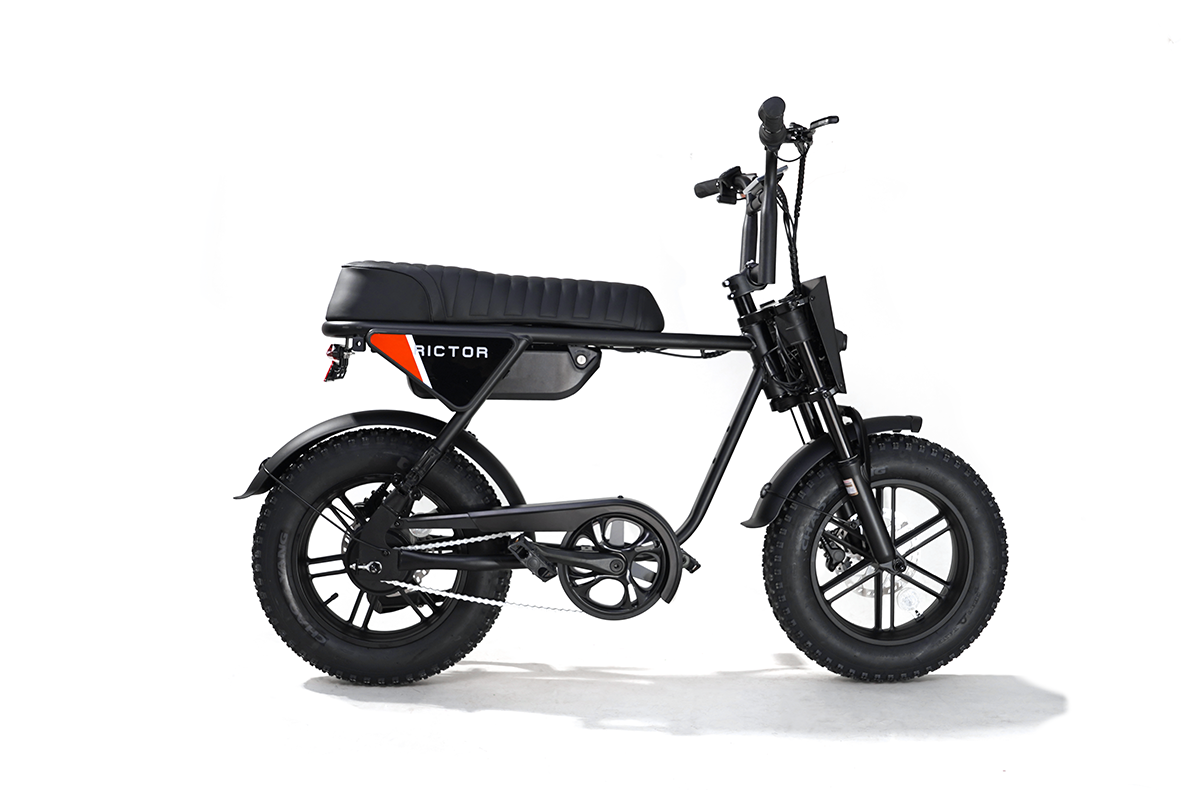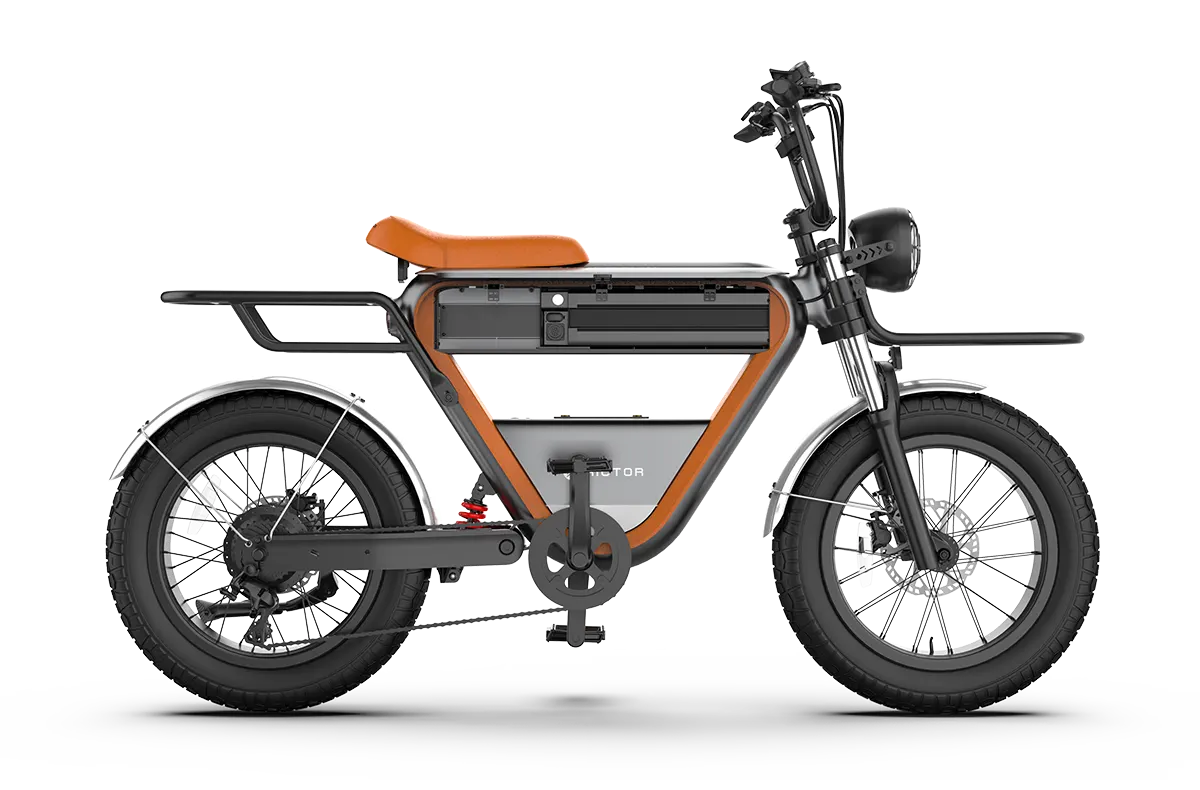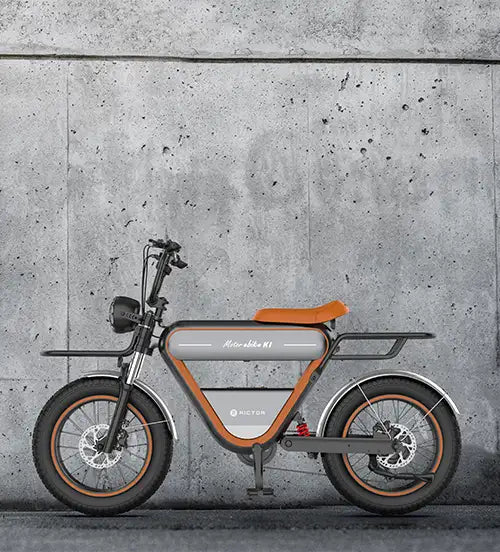
Tips to Prevent Ebike Tire Blowouts
When you're out enjoying your electric bike, the last thing you want is to deal with a tire blowout. Tire blowouts can ruin your ride and potentially cause safety issues. While it’s impossible to guarantee you’ll never face a blowout, there are several practical steps you can take to significantly reduce the risk.
1. Choose the Right Tires for Your Riding Style
The type of tire you use on your electric bike plays a crucial role in preventing blowouts. Not all tires are created equal, and selecting the right one for the type of terrain you ride on can make all the difference. For instance, if you often ride on rough, uneven surfaces, opt for thicker, puncture resistant tires. These tires are designed to withstand rough conditions and are less likely to suffer from sharp objects like rocks or glass.
If you mostly ride on smooth, paved roads, you may not need tires with such heavy duty construction. Road bike tires tend to be thinner but offer lower rolling resistance, providing a smoother, faster ride. It's crucial to match the tire to the surface you most commonly ride on.
2. Maintain Proper Tire Pressure
Maintaining the correct tire pressure is one of the simplest yet most effective ways to avoid blowouts. Tires that are too underinflated are more susceptible to damage from sharp objects or the heat generated by friction. Overinflated tires, on the other hand, make the tire wall more fragile, increasing the risk of sudden blowouts.
Check the manufacturer’s recommended tire pressure for your ebike model and make it a habit to check the pressure regularly. Invest in a quality tire pressure gauge to ensure accurate readings. It’s always a good idea to check your tire pressure before heading out for a ride, especially if you haven’t ridden in a while.
3. Inspect Tires Regularly for Damage
Your tires endure a lot, and regular inspections are essential to prevent blowouts. Before each ride, take a moment to inspect the tread for any signs of wear, cracks, or punctures. Small debris, sharp objects, or cuts can quickly evolve into major issues if left unnoticed.
If you spot any visible damage, such as cuts or punctures, consider replacing the tire. Even minor imperfections can weaken the tire’s integrity, increasing the chances of a blowout during a ride. Don’t forget to also check the sidewalls for bulges or cracks, which are often a precursor to a blowout.
SEE ALSO How Long Do Fat Tire Electric Bike Last?

4. Use Puncture Resistant Tire Liners
Adding a puncture-resistant liner between your tire and inner tube can significantly reduce the likelihood of a blowout. These liners act as an additional barrier to sharp objects like nails or glass, preventing them from reaching the inner tube and causing a puncture or blowout. While not completely invincible, they offer a great layer of protection and can extend the life of your tires.
Some tire brands come with built-in puncture-resistant technology, but if yours don’t, installing a liner is a smart and affordable option. It’s an easy upgrade that can save you from costly tire replacements and unexpected blowouts.
5. Avoid Riding Over Sharp Objects
While this may seem obvious, it’s worth mentioning. Sharp objects, such as nails, glass shards, or rocks, are a leading cause of tire blowouts. Always be aware of your surroundings and try to avoid debris on the road or trail.
If you find yourself riding in areas prone to litter or sharp objects, such as urban streets or construction zones, slow down and ride more cautiously. Maintaining a safe speed reduces the impact of any potential puncture-causing debris you may encounter.
6. Regularly Clean Your Tires
Keeping your tires clean isn’t just about aesthetics; it also helps prevent debris buildup that can lead to punctures or blowouts. Dirt, stones, and other small particles can get lodged in your tire tread, and over time, they may compromise the tire’s durability.
After each ride, take a moment to clean your tires, especially if you've been on a rough or muddy trail. A gentle scrub with water and a soft brush can remove debris and keep your tires in optimal condition. Pay extra attention to the areas near the tread and sidewalls, where small objects are most likely to hide.
7. Avoid Sudden Impacts and Hard Braking
Harsh riding conditions can put unnecessary stress on your tires. Avoid sharp turns, sudden impacts, or slamming on the brakes, especially when riding over obstacles or curbs. These actions can cause the tire pressure to fluctuate or put undue pressure on the tire sidewalls, leading to blowouts.
Try to maintain a smooth and steady riding style to reduce the likelihood of putting excessive stress on your tires. Take it easy on rough terrain, and give yourself plenty of room to navigate over obstacles.
8. Replace Worn Tires Promptly
Even the best tires have a limited lifespan, and over time, they will wear down. Once the tread has significantly worn down or the tire has sustained multiple punctures, it’s time to replace it. Riding on worn tires significantly increases the chances of a blowout, as the tire’s ability to absorb impacts and resist punctures diminishes.
Check the tire tread regularly to ensure it’s still providing sufficient traction. Most tires come with wear indicators, but even if yours don’t, it’s a good rule of thumb to replace them once they show noticeable wear or damage.
9. Store Your Ebike Properly
Improper storage can also contribute to tire damage. If you store your electric bike in an area exposed to extreme heat or cold, the rubber can become brittle or lose its shape. Store your bike in a cool, dry place, away from direct sunlight, and make sure the tires aren’t exposed to prolonged pressure, especially when the bike isn’t being used.
It’s also important to store your ebike in a way that avoids putting excessive weight on the tires. Hanging or leaning the bike on a sturdy stand will ensure the tires maintain their shape and don’t become deformed over time.
Conclusion
Preventing ebike tire blowouts is all about staying proactive. From choosing the right tires, such as those found on the Rictor best electric bikes for commuting, to maintaining proper pressure and inspecting for damage, there are plenty of steps you can take to protect your ride. Regularly checking and maintaining your tires, riding cautiously, and using puncture-resistant liners will ensure your bike stays in top condition and minimizes the risk of blowouts.
FAQs
How often should I check my ebike tire pressure?
It’s a good idea to check your tire pressure before every ride. This ensures that your tires are always at their optimal pressure for safety and performance.
Can I use regular bike tires on my ebike?
While it’s possible, it’s best to use tires designed specifically for electric bikes. Ebike tires are made to withstand the additional weight and speed that comes with electric bikes.
How can I tell if my tire needs replacing?
If your tire shows visible wear, cracks, or punctures, it’s time to replace it. If the tread is worn down or damaged, replacing the tire will help avoid potential blowouts.




